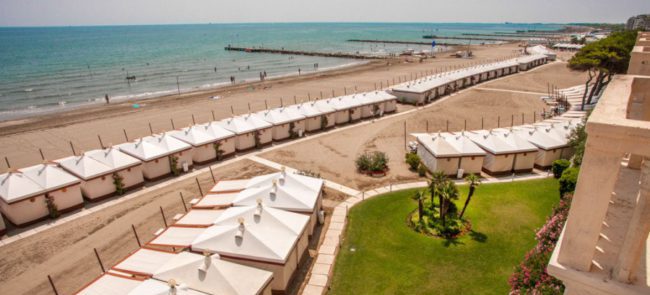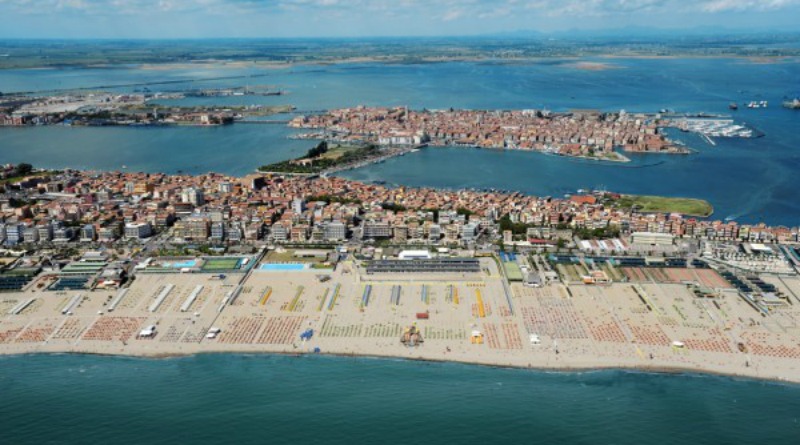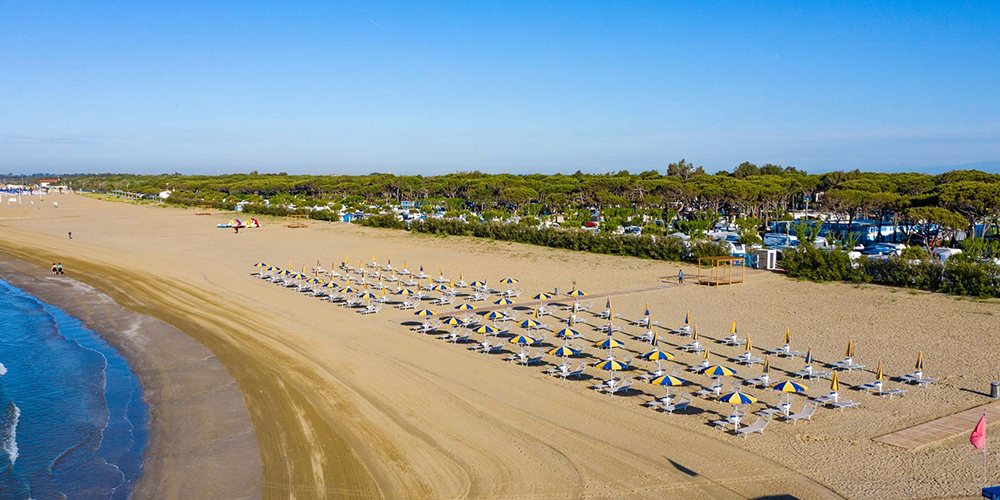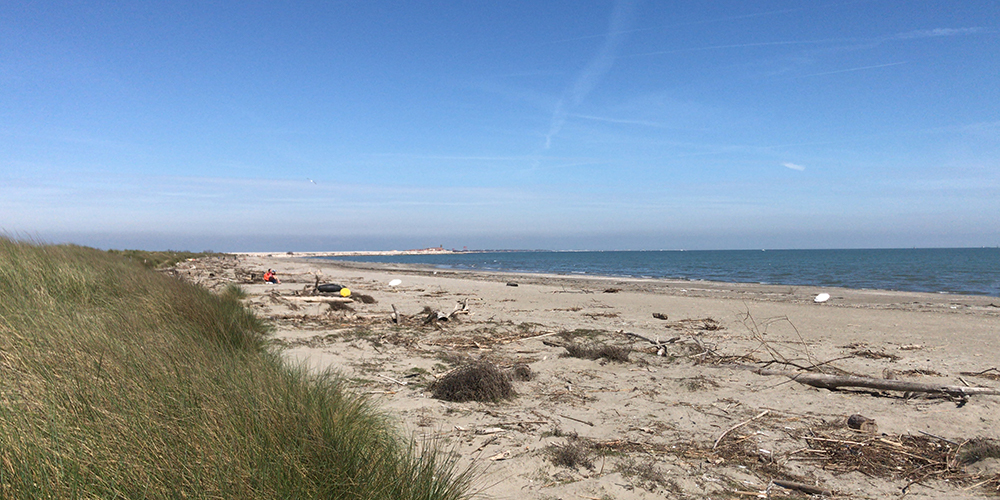Art, culture, architecture, history are just some of the keywords that have always been associated with the city of Venice, but the capital Veneto has much more to offer. An unexpected resource, often little known to tourists who invade Venice every year, is the splendid lagoon coast which hosts wonderful beaches where you can spend unforgettable days immersed in the water of the sea and burned by the heat of the summer sun. Beaches equipped with every kind of comfort but also pristine places where native flora and fauna are the masters.
This useful guide will accompany you to discover the most beautiful beaches in Venice and its surroundings, please do not forget your swimsuit!
Beaches on the Lido of Venice

The Lido beaches are preferred by the Venetians in the summer. At the two ends of the island, two breakwaters stretch into the sea which protect swimmers from the passage of dangerous ships and boats and also allow children to swim in complete tranquility. The first bathing establishments of the Lido were born in 1857, when for the first time the island began to come alive for the arrival of visitors. Elegant, charming and suitable for the whole family, the Lido's beaches host numerous bathing establishments that offer the possibility of renting umbrellas, deck chairs, sun beds and all types of beach equipment. The main feature of the equipped beaches is the singular hut, a particular cabin halfway between a tent and an umbrella, a semi-closed structure that is rented every year for the entire summer season by several families or groups of friends.
In addition to the equipped beaches, the Lido offers also large areas of free beach where you can plant your umbrella and lie in the sun away from the busy areas of the tourist beaches. Among the most suggestive free beaches are the sandy dunes of San Nicolò and Alberoni, the Alberoni area is an oasis protected by the WWF suitable for all lovers of nature and biodiversity, where it is possible to take a dip admire small tracts of spontaneous vegetation and different species of birds difficult to find in habitats other than this, and it is not difficult to spot sea turtles in the sea in front. The rocks of the Murazzi are the ideal solution for those who do not like the social life of equipped beaches and for those who want to dive directly into deeper waters. Near the vaporetto stop, however, there is the Bluemoon, the central free beach of the Lido which, unlike the others, is more crowded and frequented by young tourists.
Jesolo beach

On the coast of the Adriatic Sea, heading north east, is Jesolo, a small town in the province of Venice. Considered by many to be the "European Miami", Jesolo is known for being a seaside tourist destination and for the many services offered. The its Lido boasts a length of 16 kilometers and is the perfect place for a holiday of relaxation, sea and fun; it is also located in a strategic position that embraces the most varied and evocative landscapes. The Lagoon, the mountains, cities and towns of art. The Lido di Jesolo can boasts of the prestigious Blue Flag award: is in fact its waters are clean and crystal clear, respecting the parameters of high quality, and its beaches offer services and every kind of comfort, always clean and tidy, in total respect of the territory and the environment.
There is no lack of free beaches where you can stop with your umbrella at no cost.
Sottomarina beach

Sottomarina is a tourist resort, today district of Chioggia which is a few kilometers from the city of Venice. Its beach is characterized by a very fine sand and by the presence of recreational facilities such as beach volleyball, five-a-side football, bocce, tennis and other recreational activities but also equipped establishments, discos and refreshment points. Sottomarina beach is one of the favorite destinations for visitors to northern Italy who want to spend a few days at the beach not far from Venice.
In the seventies, Sottomarina was known for the alleged healing and tanning properties of its sand due to the high salinity rate, in fact many visitors went to the Chioggia resort to undergo the so-called sandblasting. its is a spa treatment that consists of covering the body with sea sand to promote a golden and lasting tan. A belief that has roots in the past and that has given great prestige to the place to the point that at the turn of the nineteenth and twentieth century a large number of aristocratic families went there to undergo treatment as well as to spend their summer holidays.
Sottomarina beach is about 6 kilometers long and can also reach 300 meters wide, a large space ideal for every need: families with children, couples, young people looking for nightlife and sports. One of the attractions of the beach is the promenade which stretches for about 2 kilometers and is the ideal destination for those who want to take a walk on foot or by bicycle or for jogging.
Cavallino beach

The Cavallino coast extends for about 15 kilometers along the stretch of the Venetian coast between Punta Sabbioni and the port of Piave Vecchia. The beach is made up of very dry and warm sand, ideal for getting away from the stress of everyday life and treating yourself to a sea-flavored holiday. Belonging to the municipality of Cavallino Treporti, the coast has very recent origins and its birth is due to the transport of debris by the Piave and Sile rivers and the consequent accumulation of sand. Cavallino hosts a natural environment where sea and Lagoon merge and offers visitors always different and unavailable scenarios in any other seaside resort, which make it a favorite destination for lovers of camping and outdoor tourism. There is no shortage of bathing beaches where you can spend long relaxing days under an umbrella, but also large equipped spaces where you can practice outdoor activities such as bowls, beach volleyball and football. Cavallino beach enjoys the Blue Flag, the international recognition that is awarded to coastal resorts that meet the criteria of quality of their water and services, and respect for the environment.
Cà Roman beach

Founded at the end of the 1900s following the construction of the breakwater, Ca 'Roman beach is a small naturalistic jewel that rises between the Venice Lagoon and the Adriatic Sea. It is a strip of land that has remained almost unchanged over time and offers tourists from all over the world some characteristic natural habitats. Ca 'Roman beach is completely free and wild, kept clean only from man-made waste that risks polluting the beautiful golden sand. The peculiar sand dunes separate the beach from a dense uncontaminated forest, an environment rich in flora and fauna native to the place, an ideal place for adventure seekers and nature lovers. Ca ’Roman houses a Natural Oasis established by Lipu, Italian Bird Protection League, and is recognized as a Site of Community Importance (SIC) and Special Protection Area (SPA) by the Ministry of the Environment. Among the species of birds that populate the area the kingfisher, the gull, the coral gull, the bee-eater and many other species that are not visible in other types of environment are observed.
Brussa beach in Caorle

Between the mouths of the Livenza and Lemene rivers is Caorle, a municipality in the metropolitan city of Venice: overlooks the Adriatic Sea for 18 kilometers and boasts Blue Flag recognized beaches that have made it one of the favorite tourist destinations for sea lovers. One of the most beautiful beaches in Caorle is Brussa beach, a 900 hectare coastal site located in the Naturalistic Oasis of Vallevecchia: a 4 kilometer long sandy beach characterized by a wild and uncontaminated lagoon environment. Close to the beach there is a large pine forest, an ideal place to find shelter from the sun and enjoy the natural coolness. The forest has undergone major redevelopment works, if you go inside you can find hares, fallow deer, herring gulls and wild geese. Typical of the Brussa area are the casoni, wooden houses built with woven reeds within which, until the 1960s, fishermen used to stay there. Today the casoni are no longer used as homes but are tourist attractions that attract a large number of curious visitors every year.










Lascia un commento